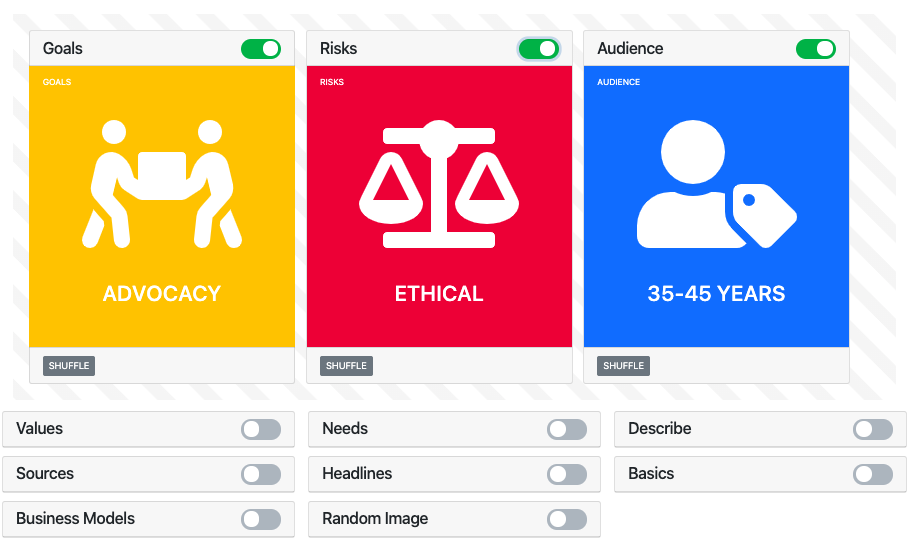Journalism.cards — Ideation for journalism.
Journalism.cards is an ideation app aimed at encouraging creative thinking in journalists and journalism students

A few weeks ago we held an industry event where students got to chat with working journalists and news editors. The inevitable question at these events is ‘what advice would you give students coming into your newsroom’. The answer? Come with ideas.
But the ability to turn that into a good story is as much about experience as it is any ‘innate’ news sense. Journalists grow to understand their audience and, equally as important, the tone and range of the organisation they work for. They learn what works and doesn’t work.
Fronting up with story ideas is something we encourage our students to do at every level — any j-school course would. Whether it’s for assignments or just to throw into the mix in seminars — we know its vital that students keep their ear to the ground and always have an idea to work with. Our students often come with some fabulous insights and ideas but developing them can often be a challenge. The conversation usually becomes more difficult after the initial — “That’s a great idea, so what do we do next?” Without experience, this can be a tough question for someone starting out.
There are ways that we can encapsulate elements of experience for students. We talk about things like ‘news values’ and how they might drive our thinking. Once understood, these are ‘tools’ that students can use to test their ideas against as they build experience.
But there is also something else that comes with experience — confidence. A working sense of how these ideas play out gives you the confidence to challenge them, play with them and mould ideas to fit — confidence and experience allow us to be creative.
So I’ve been thinking about engaging ways to build confidence in some of these core ideas and, in particular, encourage more abstract and creative thinking around the process of developing ideas.
The result is Journalism.cards and here’s how it works.
The system has a number of cards, based for the most part around core journalism concepts. Draw a card, shuffle the deck and ponder the result. Some cards can be ‘flipped’ to show extra context (and cite the sources) and they may contain questions to consider. But the key is to throw up a card and get thinking.

You could draw an audience card for 25–35 year-olds. The students can then spend time really thinking about that audience group. Who are they? What do they want? Do you know anyone in that category!? Once you’ve done that, throw in an Activity card. What do 25–35 year-olds for lunch? What could we do to help them have a better lunch break? Shuffle the audience deck again. How is this audience different.

I’ve also included a couple of other prompts in the mix. There’s a Headlines card which takes a random story from Google news. You could throw an audience card next to that and ask ‘how do these two cards work together’.

I’ve also included a Random image card. Just throw up a random image (from unsplash) and ask ‘what does this make you think of?’ Throw it up next to a ‘news values’ or audience card and brainstorm how they relate.

Journalism.cards isn’t meant to be a stand-alone solution — it relies on conversation, sharing ideas and building confidence in getting ideas out there to be kicked-around. It’s also not meant to be a story machine. It’s not Audience + News Values + Headline = Story. Hopefully, this is a bit more abstract (but not too abstract). The more the concepts are explored, hopefully, the more confident students are in being creative in developing ideas. That’s not to say you couldn’t use it to develop ideas. If you have a story idea, why not throw in an image search for “person” and think about how you would tell the story to that person.
Journalism.cards is very much a work in progress (especially the coding -I’m not a web developer!). I’m adding more contextual information for each card. I’ll also post a little more detail about my motivation and inspiration for putting the resource together.
For now, though, I’d be interested to know what you think. I hope it’s useful
